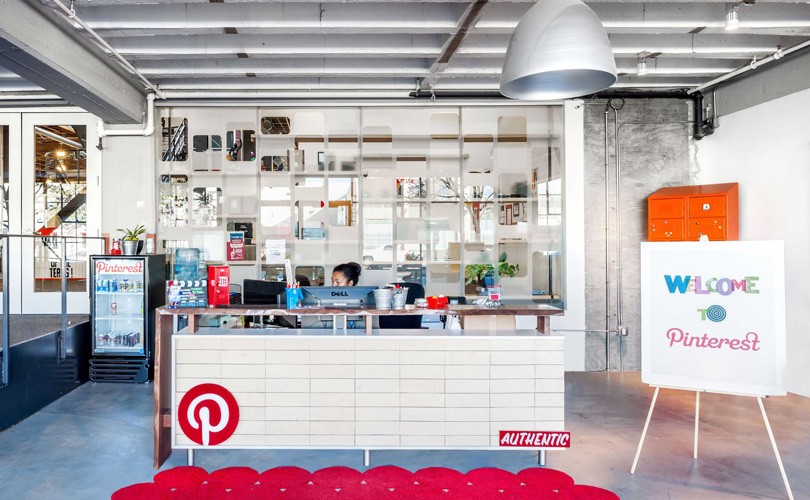4 Ways Companies Are Creating More Meaningful Interviews
The interview process is a valuable way to build a rapport with top candidates. So why are so many companies still locking their interviewees in conference rooms and grilling them for 5 hours at a time?
Beyond being painful for both sides of the interview, this traditional approach doesn’t allow you to actually get a feel for what candidates are capable of. So, instead of asking generic or impossible-to-answer case interview questions and forcing awkward meet-and-greets, some companies are finding more meaningful ways ways to break the ice and assess candidates skills.
After all, the person you hire will be your new teammate, officemate, and confidant for 40+ hours per week, so making sure they have the right skills and making the interview less painful for them is in your best interest.
Here are 4 companies that are taking new and improved approaches assessing candidates:
1. Pinterest encourages candidates to take their interviews home
Takeaway: Empower interviewees to create and share their best work
Many organizations will host an on-site challenge or problem to solve. The problem, however, is that these contexts may not empower candidates to produce their best work. Candidates may feel like they’re stressed out or under extreme pressure.
That’s why Pinterest allows engineering candidates to take their coding challenges home, where they can work in the development environments of their choice. While Pinterest expects a total time commitment of 4-6 hours, they don’t proctor or enforce time limits.
The goal is to give candidates the flexibility, time, and space to enjoy their work. The process prioritizes quality of work above interviewing constraints and allows Pinterest to see what candidates are really capable of doing.
2. Zenefits hosted virtual online hackathons
Takeaway: Work through real challenges and business problems together
Many companies rely on case interviews that feature hypothetical questions and business scenarios. The problem with this approach, however, is that it’s inefficient—which is why Google phased out its ‘brainteaser’ questions from its interviewing process back in 2013.
But still, companies need a way to better understand their candidates’ skills. That’s why the recruiting team at Zenefits hosts challenge online coding competitions in advance of the interview process. With this approach, the company can streamline its pipeline and focus on reaching candidates with specific problem-solving skills and assess those skills in real time.
3. The United States government ventured out to tech conferences to meet entrepreneurs
Takeaway: Connect with candidates outside of the formal interview process
In addition to bringing candidates to your office, why not venture out into the circles where they’re spending time?
For inspiration, take a look at one of the largest organizations in the United States--the federal government. The U.S. Government’s digital consulting agency, 18F (part of the U.S. Digital Service) has been recruiting top entrepreneurial talent from companies like Google and Facebook for the last year. These candidates are being brought on to solve some of Washington’s biggest challenges (like working on the broken Healthcare.gov website, as an example).
To find this talent, the government is reaching out to talent in and assessing them in non-formal fashion. At the 2014 Lean Startup Conference, for instance, the former CTO of the United States announced that his consulting organization was hiring--and that he was looking to meet candidates immediately following his talk. That way, he was able to get to know candidates without the pressures of a formal interview and decide who would be best to follow up with.
4. Tesla hosts an interviewing panel
Takeaway: Introduce candidates to as many people on your team as possible
One of the biggest challenges with the interviewing process is time: It’s impossible for candidates to have dozens of 1:1 conversations within people within your company. At the same time, candidates want to meet everyone on your team.
Instead of cramming people into conference rooms, bring efficiency to your interview process through panels. Have your candidates meet multiple team members at once--you can even host an open Q&A session.
For inspiration, take a look at auto company Tesla. The organization requires candidates to present to panels of about 6 people: The hiring managers, engineers, and a few directors. This group is welcome to ask candidates on-the-spot questions, too.
This approach to hiring improves efficiencies and allows both you and the candidate to better understand how their personalities will fit into the teams that they’ll potentially join.
Final thoughts
For more meaningful candidate interactions, make every touchpoint count. Focus on ways to improve communication efficiencies, learn about your candidates, and show that you care. Help your interviewees bring their best to the table.
*Image by Eddy Joaquim
To receive blog posts like this one straight in your inbox, subscribe to the blog newsletter.
Topics: Recruiting strategy
Related articles



